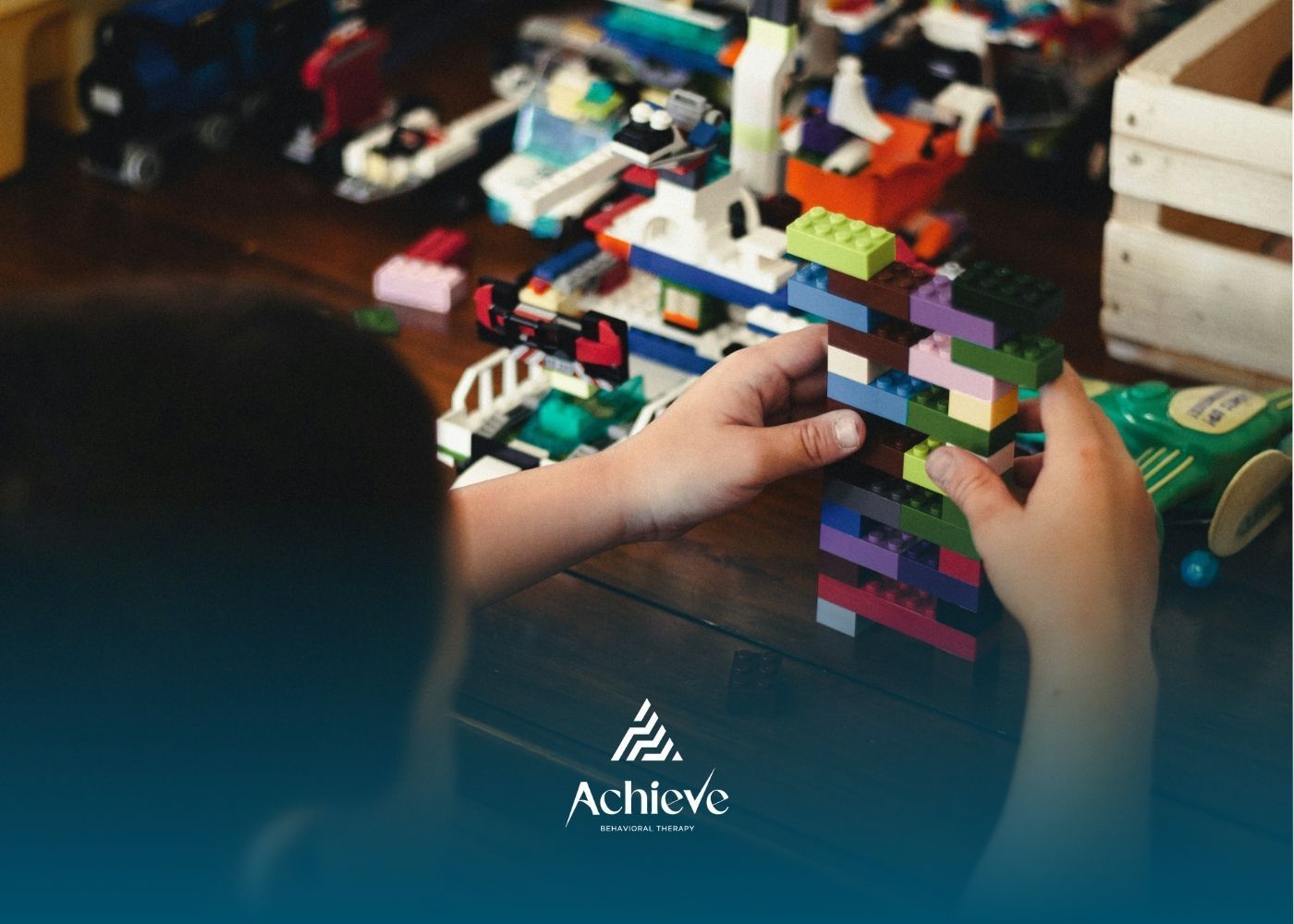The Positive Impact of ABA Therapy for Toddlers with Autism

ABA Therapy Overview
Applied behavior analysis therapy for toddlers refers to a structured, research-backed approach that helps young children with autism build essential skills. It focuses on functional communication, social interaction, daily living routines, and emotional regulation. Through careful planning and consistent data collection, practitioners adjust strategies to reinforce positive behaviors and reduce those that hinder learning.
Evidence for ABA’s effectiveness first emerged in 1968 when Baer, Wolf, and Risley described the seven dimensions guiding high-quality behavior analysis programs. Since then, multiple studies have demonstrated significant gains in adaptive behavior, language development, and social skills in toddlers who begin intervention early.
Definition and Goals
ABA interventions for toddlers break down complex skills into manageable steps. Each target behavior is defined, measured, and taught using clear instructions followed by immediate feedback. Positive reinforcement lies at the core of the method. When a child demonstrates a desired action, therapists add something pleasant like praise or a small token to increase the likelihood of that behavior recurring.
Evidence Base
Research shows that toddlers starting ABA before age five often achieve substantial improvements. Intensive early programs can yield clinically significant gains within months. In a pivotal 1987 study by Dr. O. Ivar Lovaas, 90 percent of participants showed major progress after intensive ABA therapy, and nearly half reached peer-level functioning. More recent data confirm that even moderate intensities, around 10 to 20 hours weekly, support meaningful skill development.
Core ABA Principles
ABA therapy relies on a set of guiding principles to ensure that interventions stay focused, measurable, and effective. These principles shape how goals are selected, how teaching takes place, and how progress gets tracked.
Seven Dimensions
Baer, Wolf, and Risley defined seven core dimensions of ABA:
- Applied: Targets socially significant behaviors.
- Behavioral: Focuses on observable actions.
- Analytic: Uses data to confirm that interventions cause change.
- Technological: Documents procedures in detail for consistency.
- Conceptually Systematic: Links practice to behavior-analytic theories.
- Effective: Demonstrates meaningful improvements.
- Generality: Ensures skills transfer across settings and last over time.
These dimensions guide therapists in creating programs that yield reliable, lasting outcomes.
Data Driven Approach
Recording data is vital in ABA therapy for toddlers. Practitioners conduct A-B-C analysis—antecedent, behavior, consequence—to identify triggers and outcomes. They chart performance session by session, modifying prompts or reinforcers as needed. This systematic tracking allows therapists to tweak strategies quickly when progress stalls.
Core Teaching Methods
ABA for toddlers uses several teaching techniques. Each method suits different learning contexts, goals, and individual preferences.
Discrete Trial Training
Discrete trial training (DTT) isolates one skill at a time. A therapist gives a clear instruction, waits for the child’s response, and immediately follows with reinforcement or correction. This structured, repetitive format builds foundational abilities like matching shapes, vocal requests, or following simple commands.
Natural Environment Teaching
Natural environment teaching (NET) occurs within everyday routines and play. Rather than targeting a skill at a table, NET embeds learning opportunities in activities toddlers enjoy. For example, a therapist might prompt a child to request a favorite toy during playtime. This approach boosts generalization, making it easier for children to apply skills across settings.
Additional Techniques
ABA programs often include a mix of specialized strategies:
Video Modeling
Children watch short videos of someone performing a desired skill, such as greeting a peer. Visual learners benefit from seeing the action before trying it themselves.
Prompting and Fading
Therapists use verbal, gestural, or physical prompts to guide initial responses. Over time, they gradually remove these prompts so children perform independently.
Behavior Contracts
With slightly older toddlers, simple agreements outline expected behaviors and rewards. Both child and caregiver sign off, creating shared accountability for goals like sitting at table or following a daily routine.
Method Comparison Table
| Method | Setting | Focus | Structure | Generalization |
|---|---|---|---|---|
| Discrete Trials | Clinic or Home | Single skill per trial | Highly structured | Practiced in routine |
| Natural Teaching | Home or Community | Functional skills in context | Flexible, play based | High across settings |
Early Intervention Benefits
Starting ABA therapy when neural plasticity is highest offers better outcomes. Toddlers can absorb new information rapidly and adapt to learning routines more easily than older children.
Timing and Outcomes
Studies show that initiating behavior analysis services as early as 18 to 24 months correlates with greater language acquisition, social engagement, and adaptive behavior gains. A long-term study found that toddlers entering therapy early were more likely to join typical preschool classrooms and maintain progress over years.
Typical Settings
ABA sessions for toddlers can take place in various environments:
1 Clinics
2 Homes
3 Schools or Daycares
4 Community
Flexible locations help therapists tailor learning to each child’s unique interests and family routines.
Measuring Therapy Outcomes
Ongoing assessment ensures that ABA programs remain effective and aligned with each toddler’s goals.
Data Collection Process
Therapists record session data on target behaviors daily. They track frequency, duration, or intensity of both desired and undesired actions. This data allows quick adjustments to teaching methods or reinforcers when needed.
Research Findings
A multi-year analysis revealed that 66 percent of children stayed in ABA services for at least 12 months, and 46 percent continued for 24 months. Those who remained in therapy longer experienced clinically significant adaptive behavior increases, especially among children who started with lower baseline levels.
Long Term Gains
After 24 months, toddlers receiving comprehensive programs saw an average increase of 2.49 points on the Adaptive Behavior Composite score. Lower-functioning children often achieved minimal clinically important differences, indicating meaningful real-world improvements.
Success Statistics
In the landmark 1987 study, nearly half of participants reached a level on par with neurotypical peers after intensive early intervention. This finding underscores the potential for substantial long-term gains.
Parent and Caregiver Collaboration
Family involvement plays a key role in generalizing skills and maintaining progress beyond therapy sessions.
Therapist Parent Training
ABA teams often teach parents basic principles and techniques. Understanding how to deliver prompts, reinforce behaviors, or collect simple data helps caregivers extend learning throughout daily life.
Home Support Strategies
Parents can reinforce goals by:
- Embedding learning targets in routines like mealtimes or bath time.
- Using consistent positive reinforcement for desired behaviors.
- Applying clear, simple instructions paired with immediate feedback.
Active caregiver participation boosts skill retention and reduces the likelihood of undesired behaviors resurfacing.
Addressing Common Concerns
Despite strong evidence, some families worry about the intensity or focus of ABA programs.
Ethical Considerations
Modern behavior analysts emphasize respect for each child’s individuality. The goal is to teach independence and functional skills without erasing a child’s unique traits. Practitioners avoid aversive techniques and follow ethical guidelines to ensure therapy remains welcoming and child-centered.
Criticisms and Responses
Critics argue ABA can feel repetitive or strive to enforce neurotypical norms. Defenders clarify that reinforcement strategies target functional abilities, not personality traits. They stress the importance of building meaningful skills like communication, self-care, and socialization, while accepting each child’s neurodiversity.
Maximizing Therapy Success
ABA therapy yields best outcomes when programs adapt continuously and collaborate across settings.
Individualized Plans
Therapists tailor goals based on each toddler’s strengths, interests, and family priorities. They regularly review progress data and modify teaching sequences or reinforcers to keep momentum.
School Partnerships
Early collaboration with educators ensures that skills learned in therapy carry over to preschool or daycare. Coordinated strategies such as shared reinforcers and consistent prompts help children navigate social and academic routines more effectively.
Conclusion
ABA therapy for toddlers offers a clear, evidence-driven path to build communication, social, and daily living skills. By combining foundation principles, targeted teaching methods, and ongoing data analysis, families and professionals work together to support each child’s unique potential.
Parents and caregivers interested in ABA interventions should seek qualified, ethical providers who emphasize early involvement, family training, and individualized planning. With commitment and collaboration, therapy can pave the way for toddlers with autism to thrive across home, school, and community settings.
At Achieve Behavioral Therapy, we specialize in helping toddlers with autism build communication, social, and daily living skills through individualized, evidence-based ABA therapy in New Jersey and North Carolina. Our team partners closely with parents to create engaging, developmentally appropriate programs that support progress at home, in school, and in the community.
Contact us today to learn how early ABA therapy can unlock your child’s potential.
Frequently Asked Questions
What is the best age to start ABA therapy for toddlers?
ABA therapy can begin as early as age 18 months, and research shows that early intervention often leads to better outcomes in communication, social interaction, and adaptive skills.
How many hours of ABA therapy should a toddler receive each week?
The recommended range is often 20–40 hours per week, depending on the child’s needs, goals, and tolerance. A BCBA will tailor the schedule after an initial assessment.
Can parents be involved in ABA therapy for toddlers?
Yes. Parent involvement is essential for reinforcing skills outside of sessions. Providers like Achieve Behavioral Therapy offer family training to ensure strategies are carried over into daily routines.
SOURCES:
https://pmc.ncbi.nlm.nih.gov/articles/PMC1310980/
https://pmc.ncbi.nlm.nih.gov/articles/PMC8702444/
https://childmind.org/article/controversy-around-applied-behavior-analysis/
https://my.clevelandclinic.org/health/treatments/25197-applied-behavior-analysis
https://www.autismspeaks.org/applied-behavior-analysis
Need Support?
We're Here to Help!
Our experienced team is ready to assist you. Reach out today to discuss how we can support your child's development and well-being.
Get started with expert ABA therapy today.










